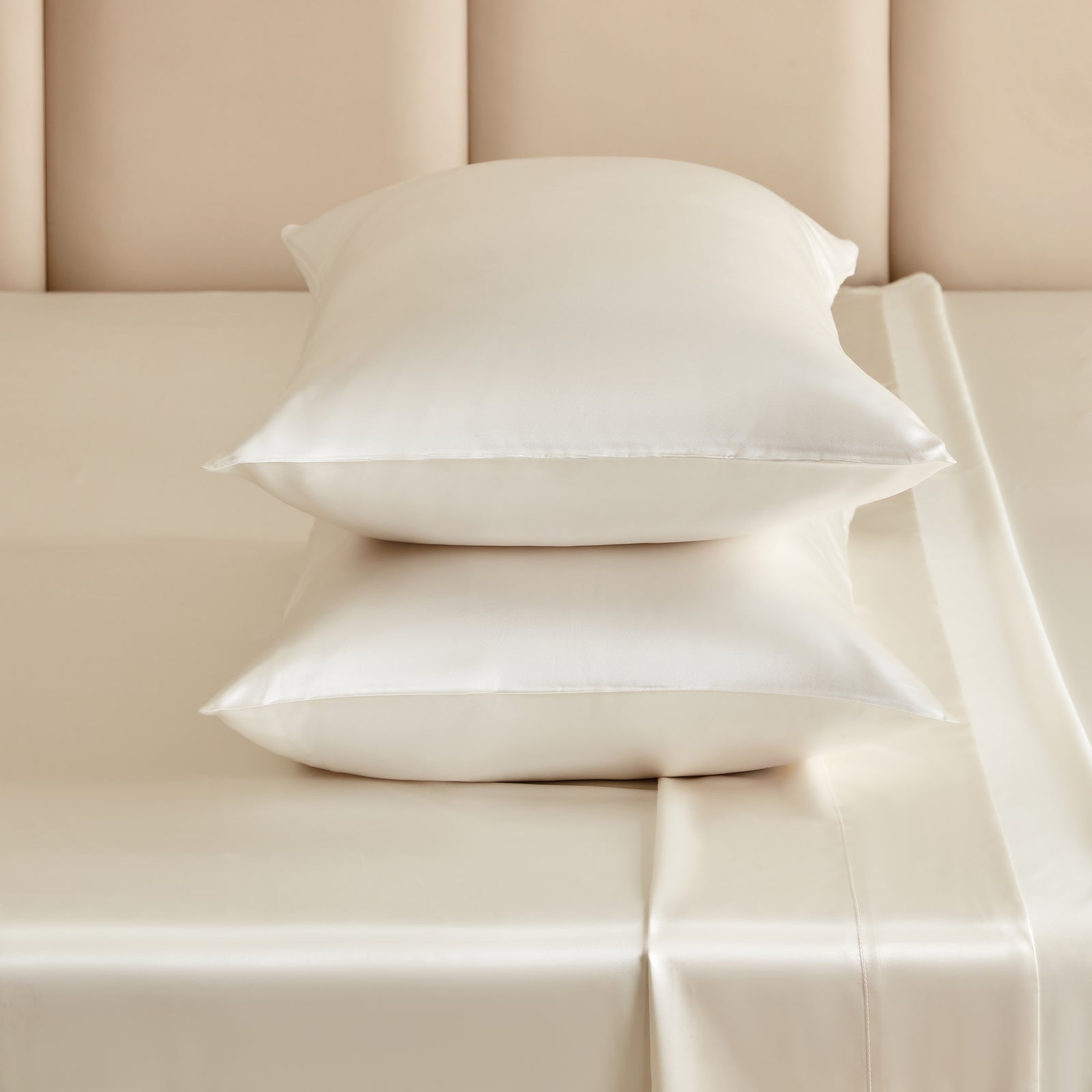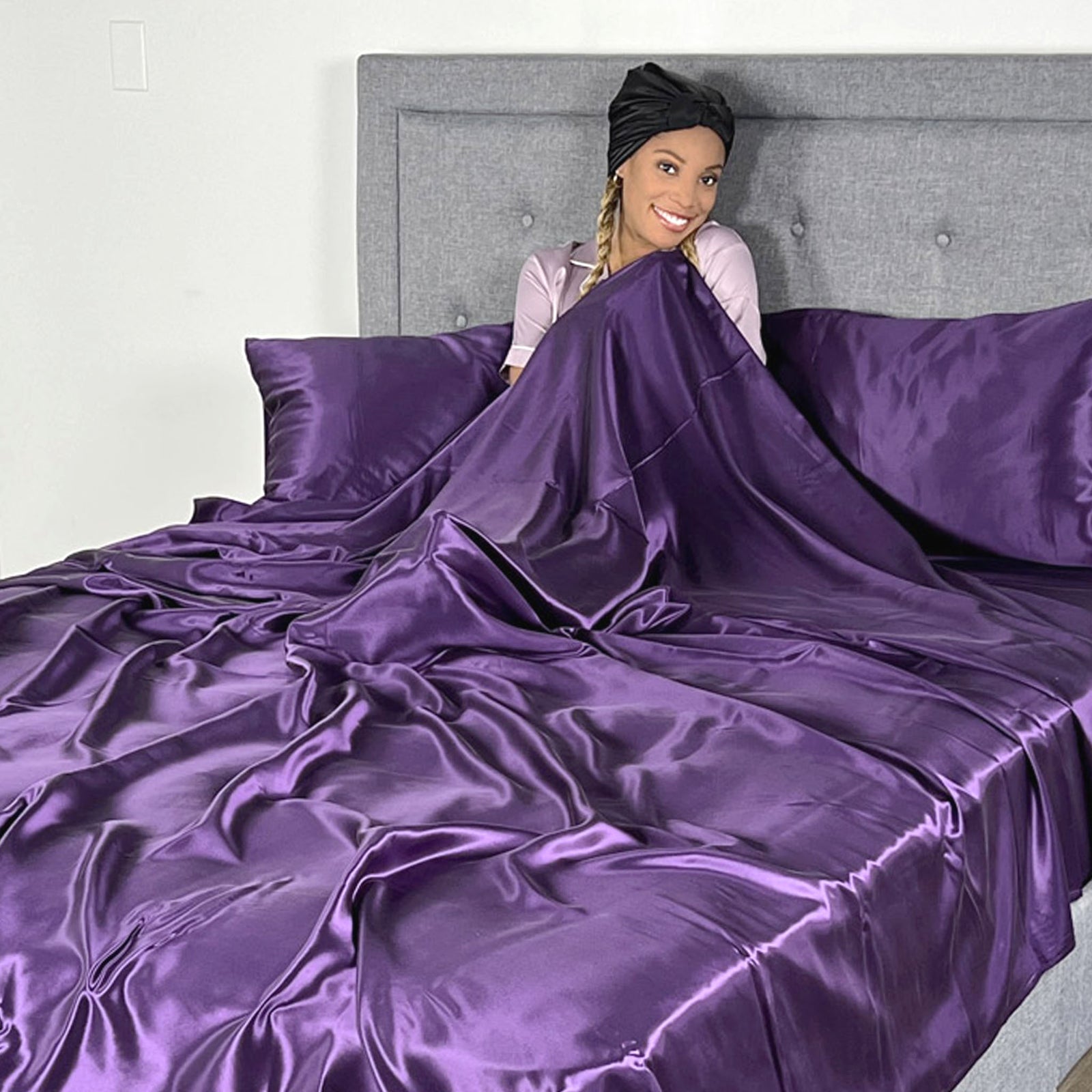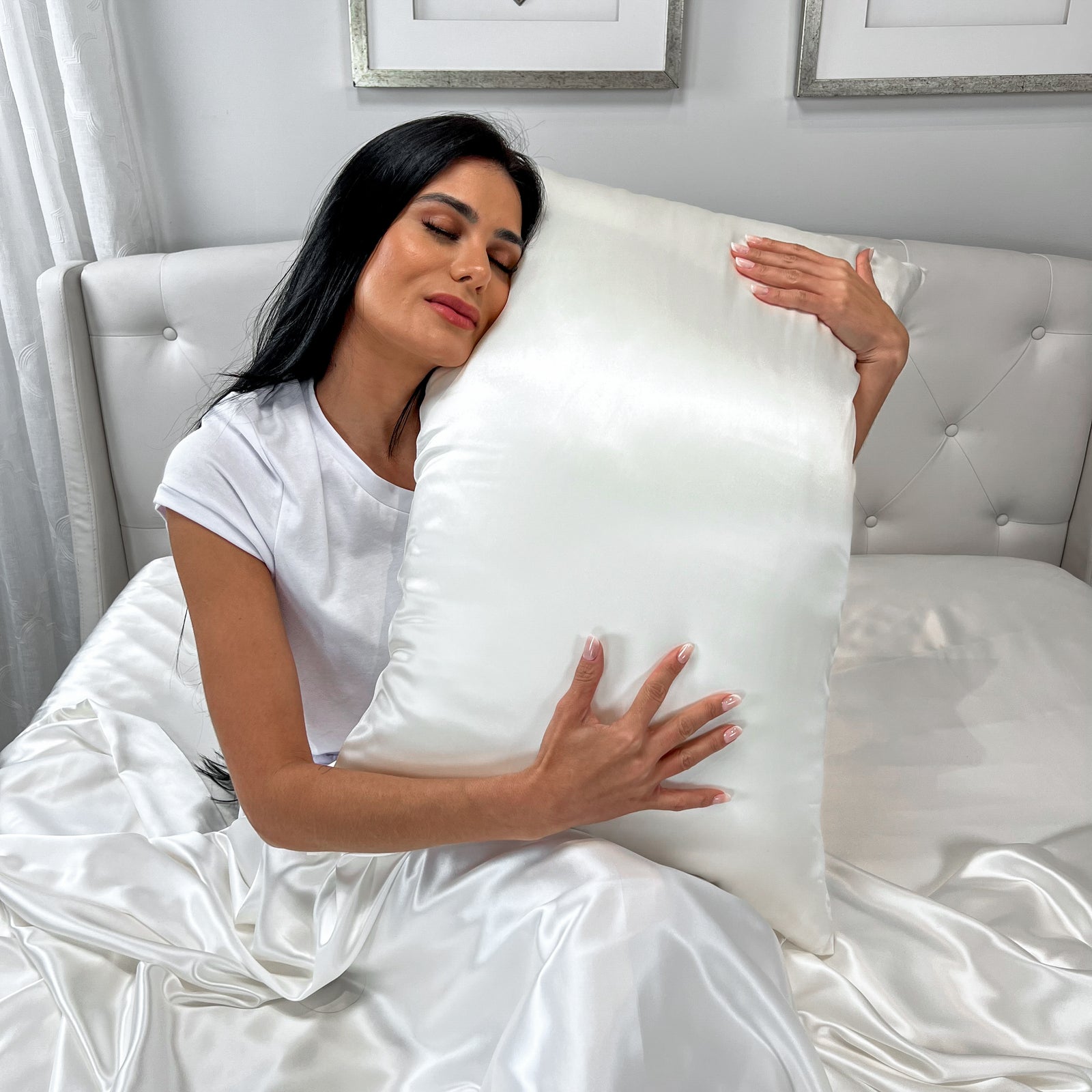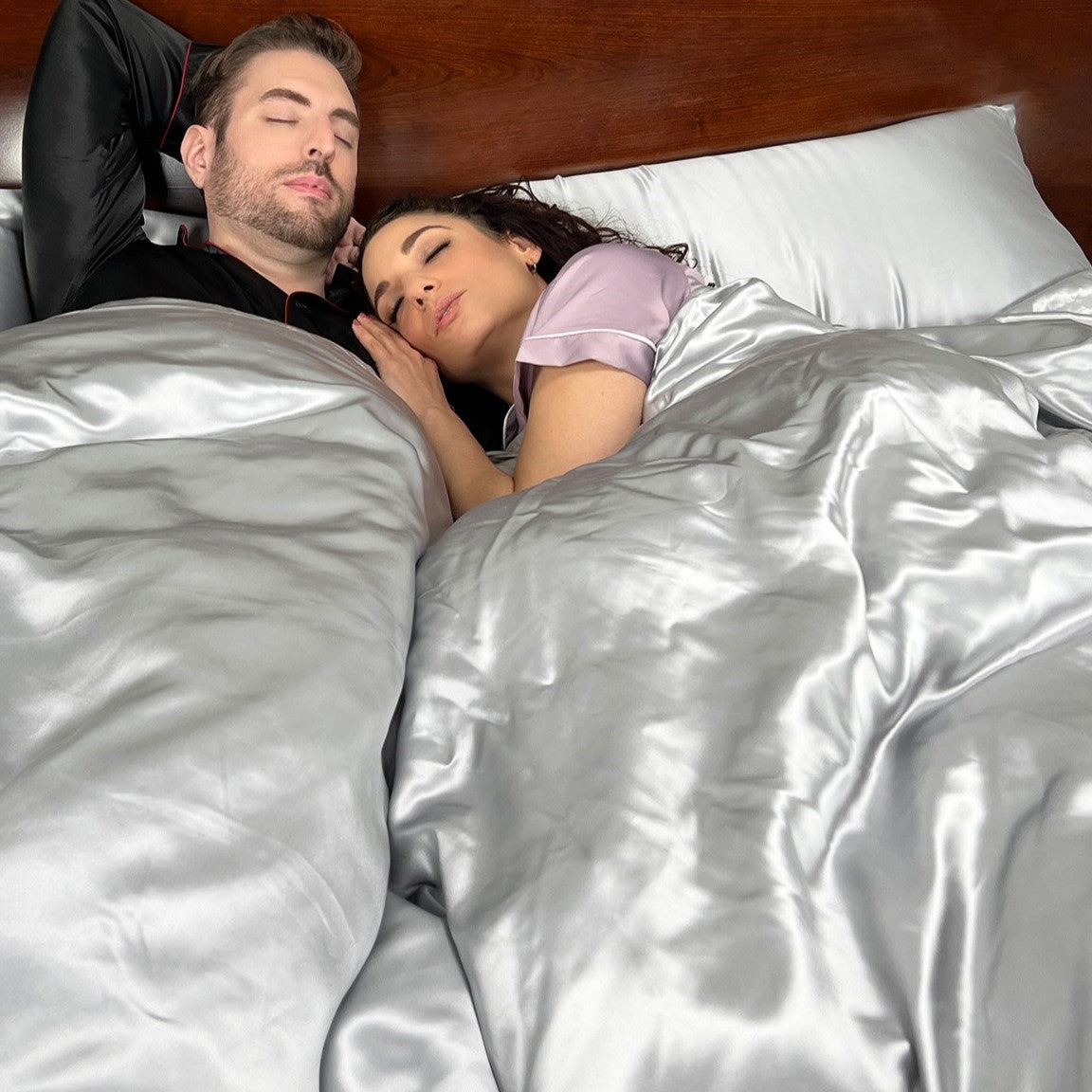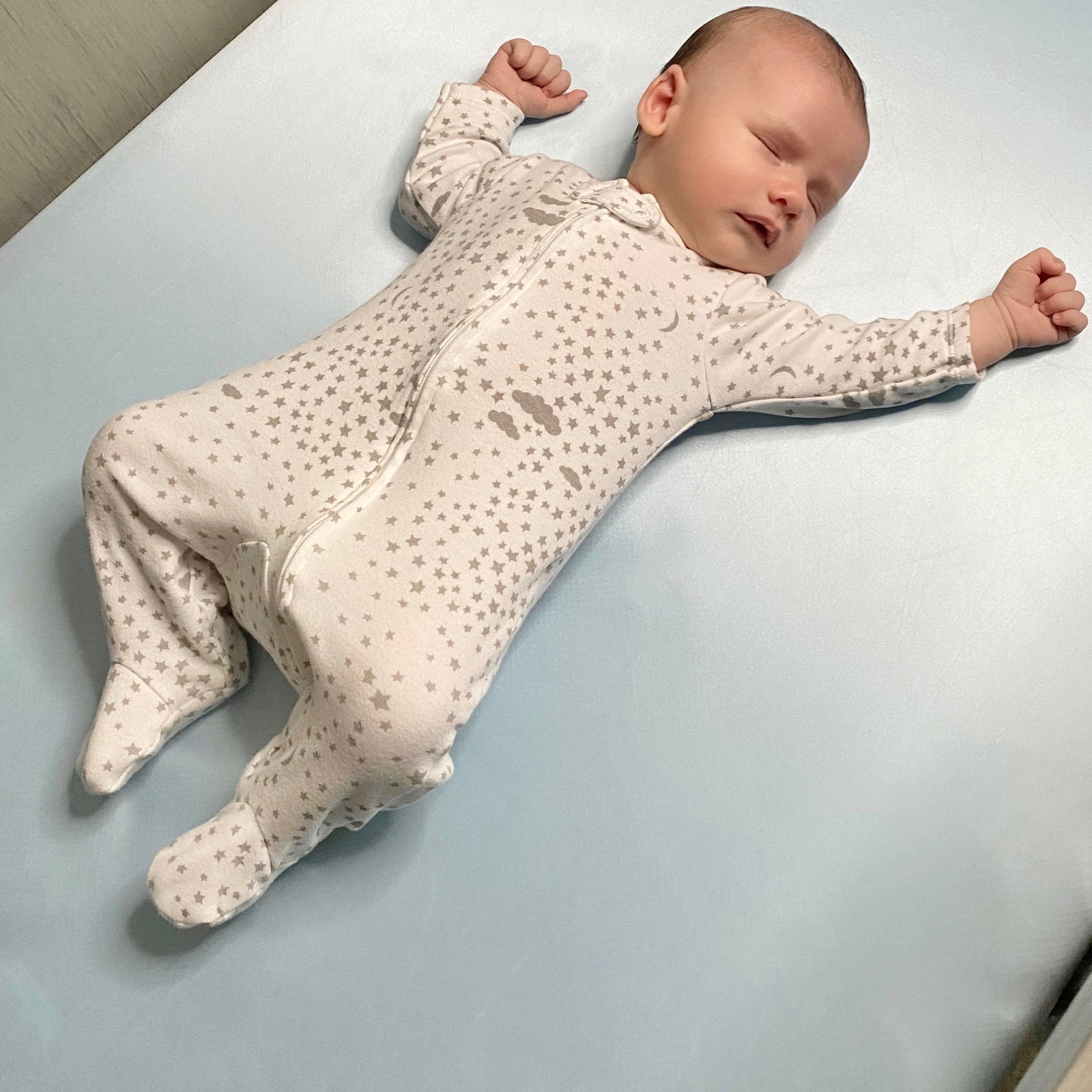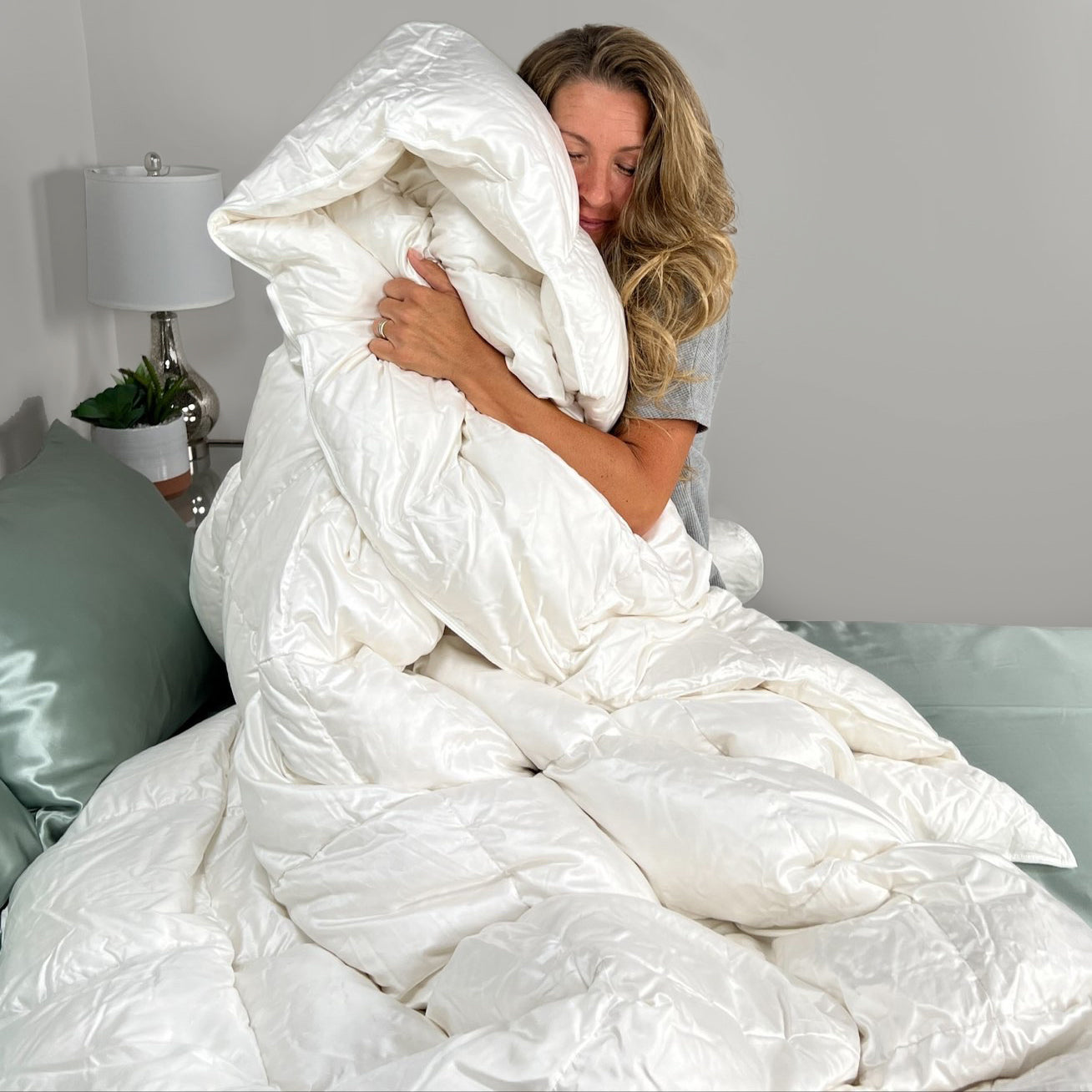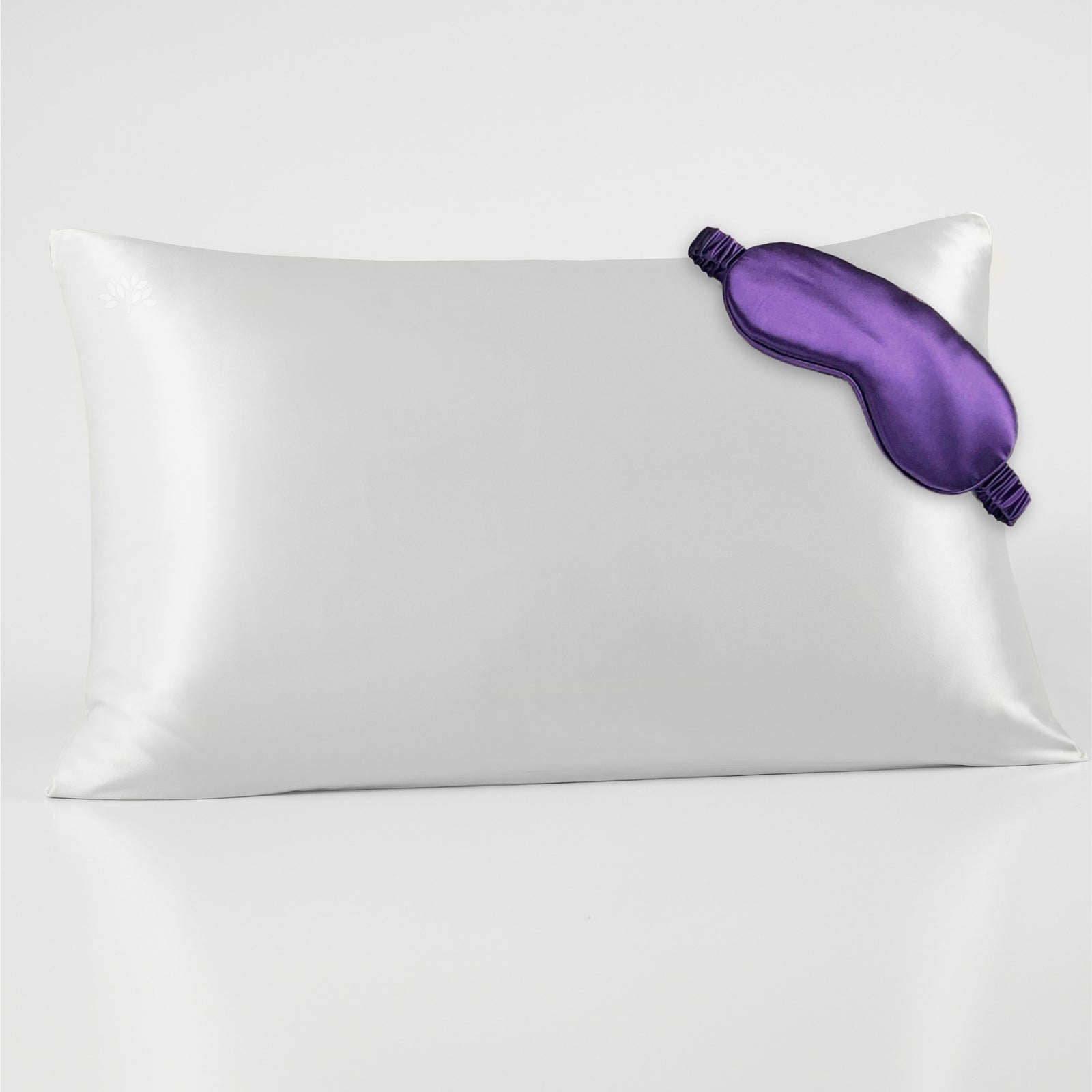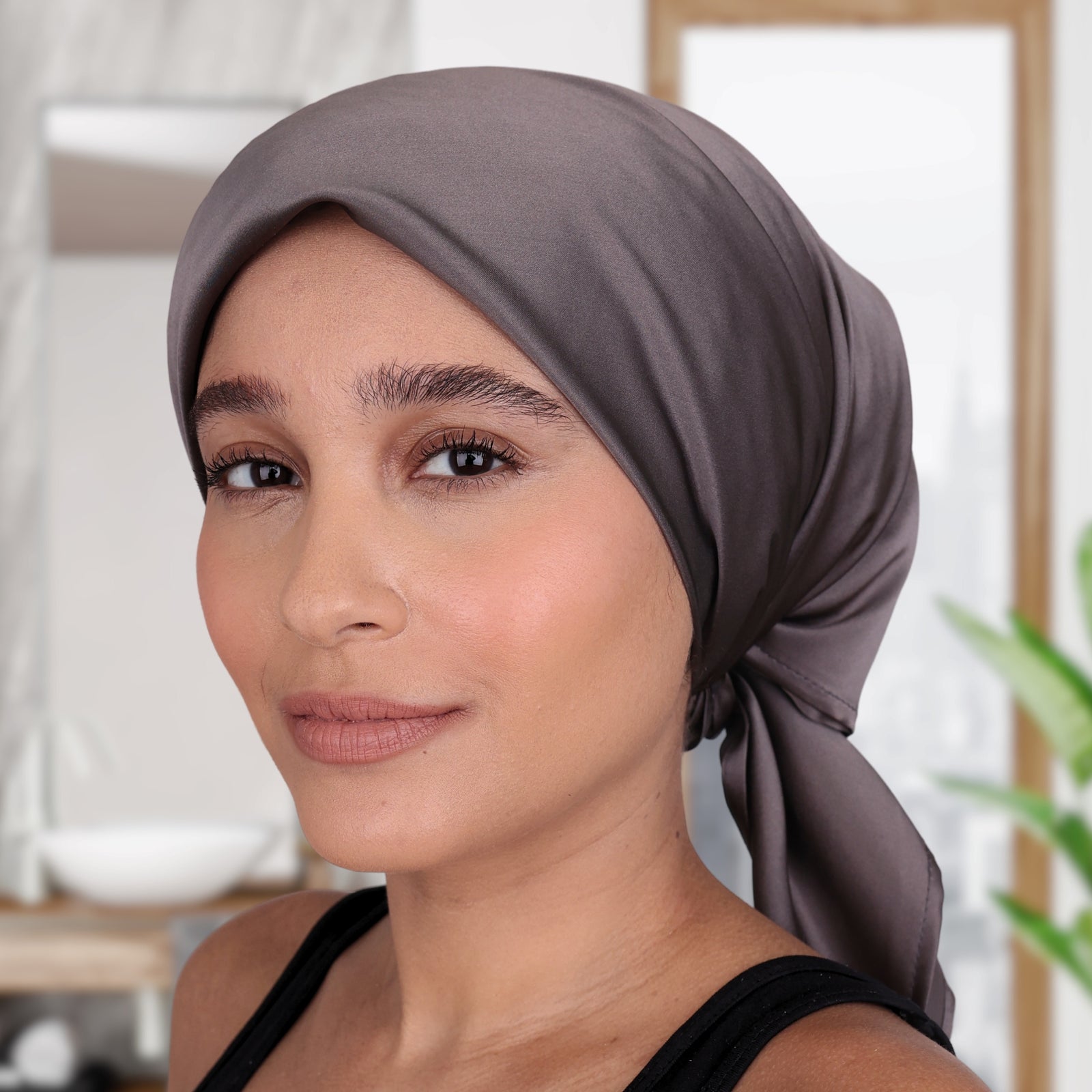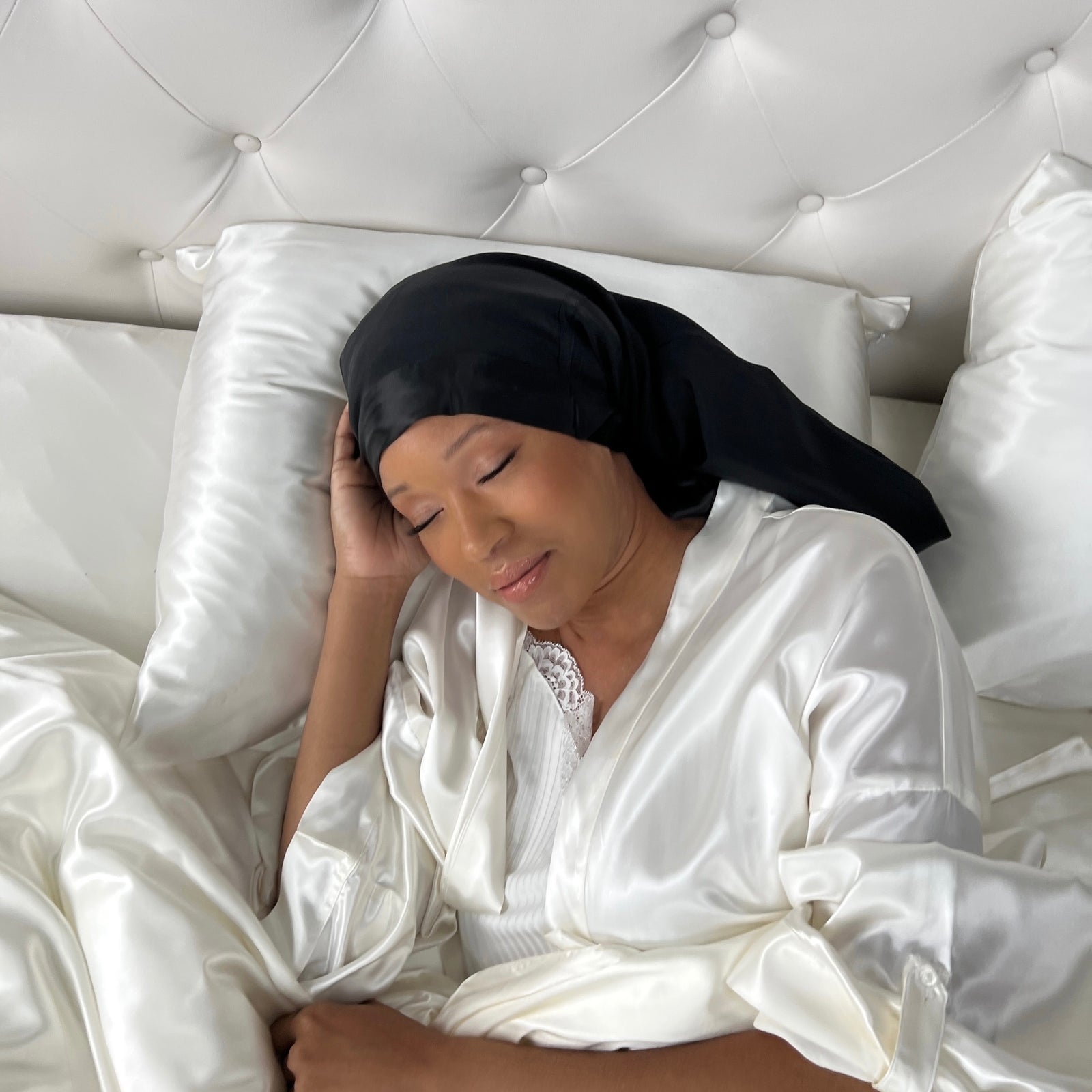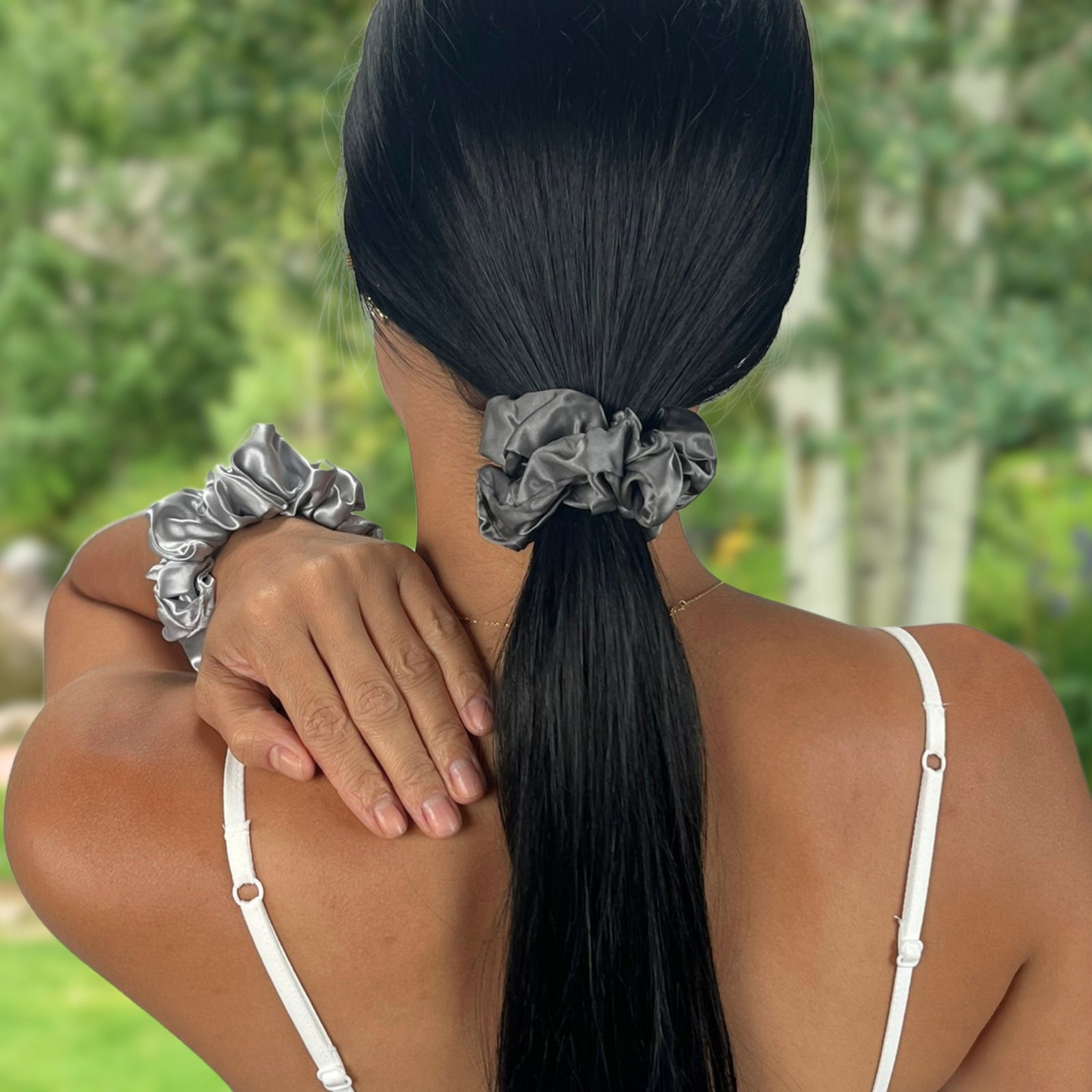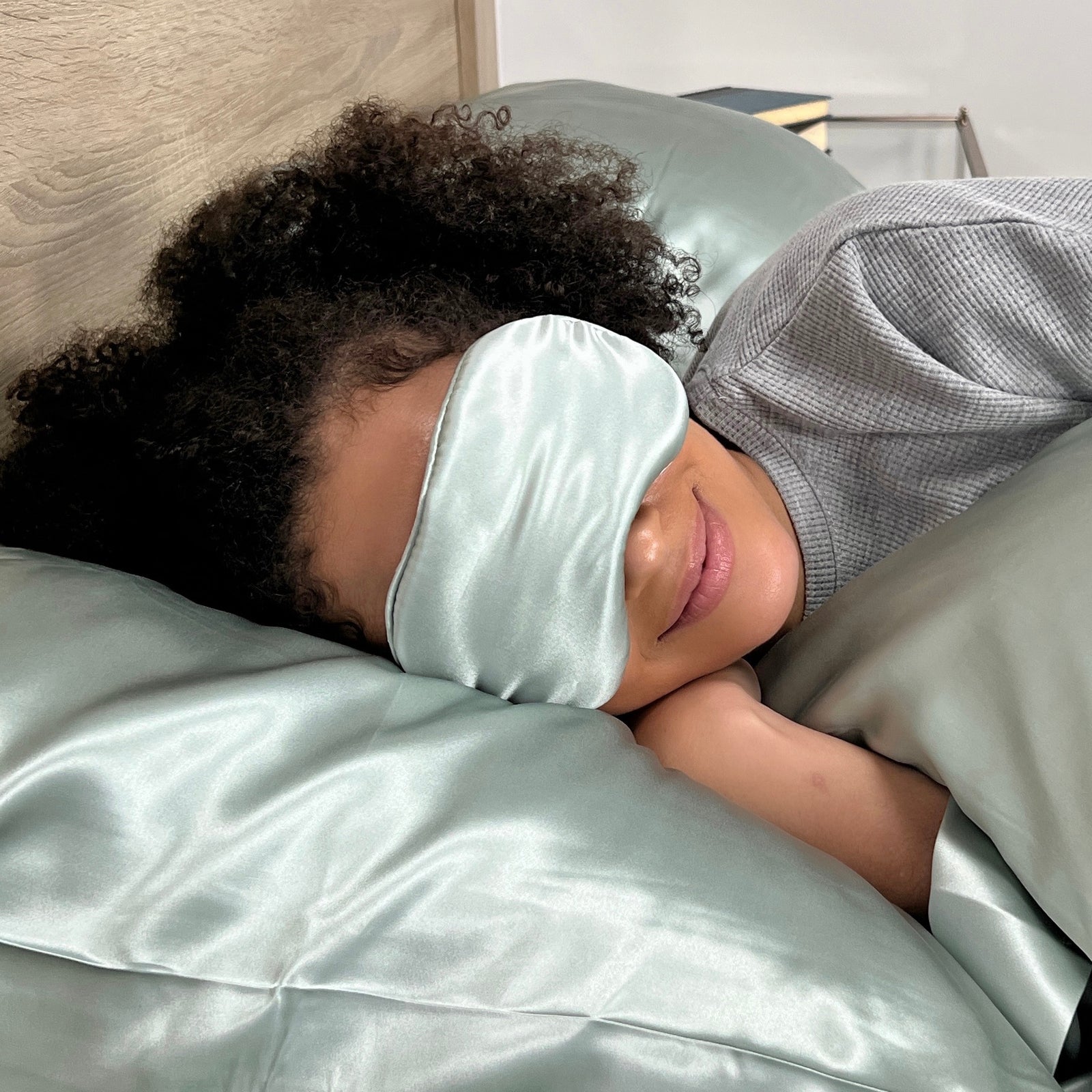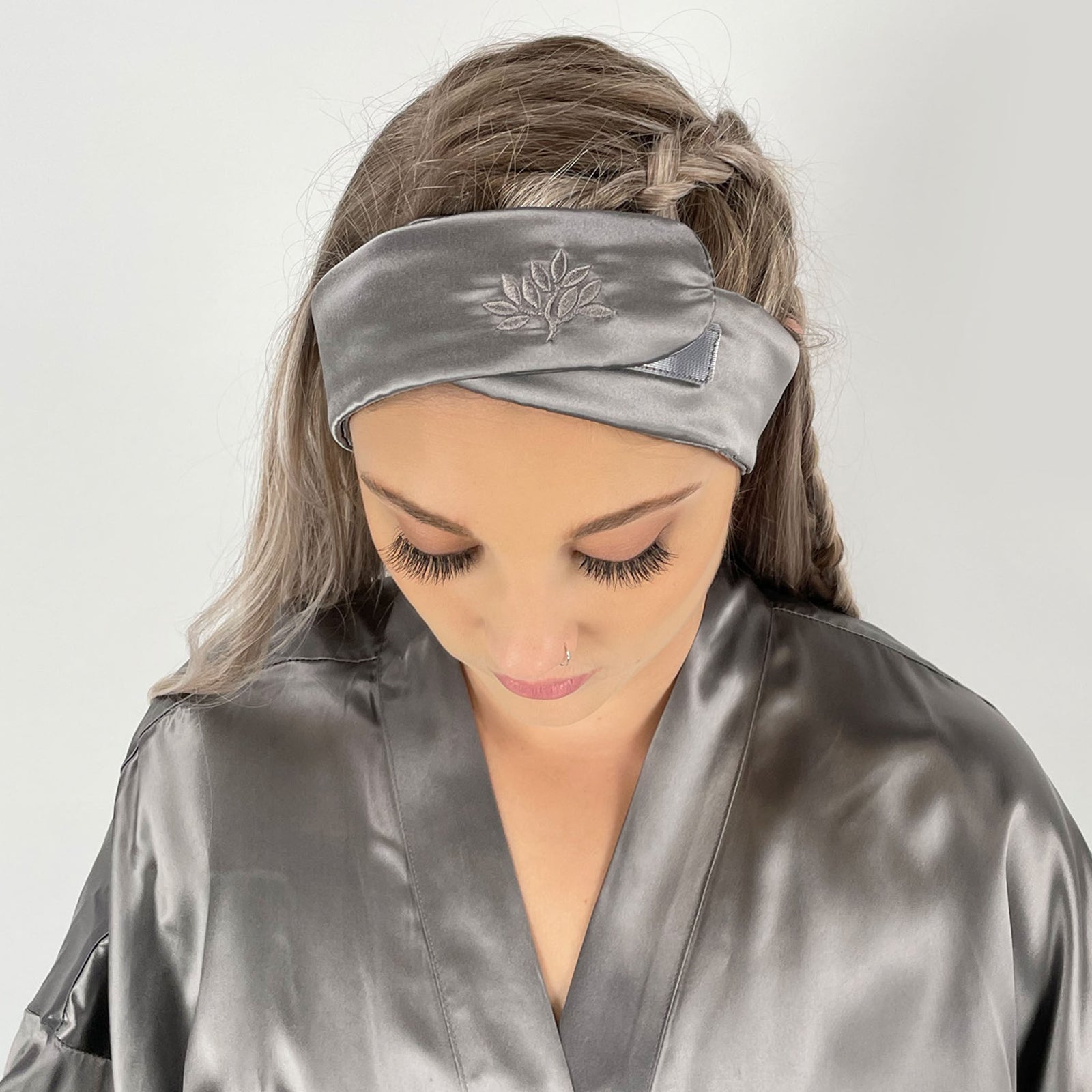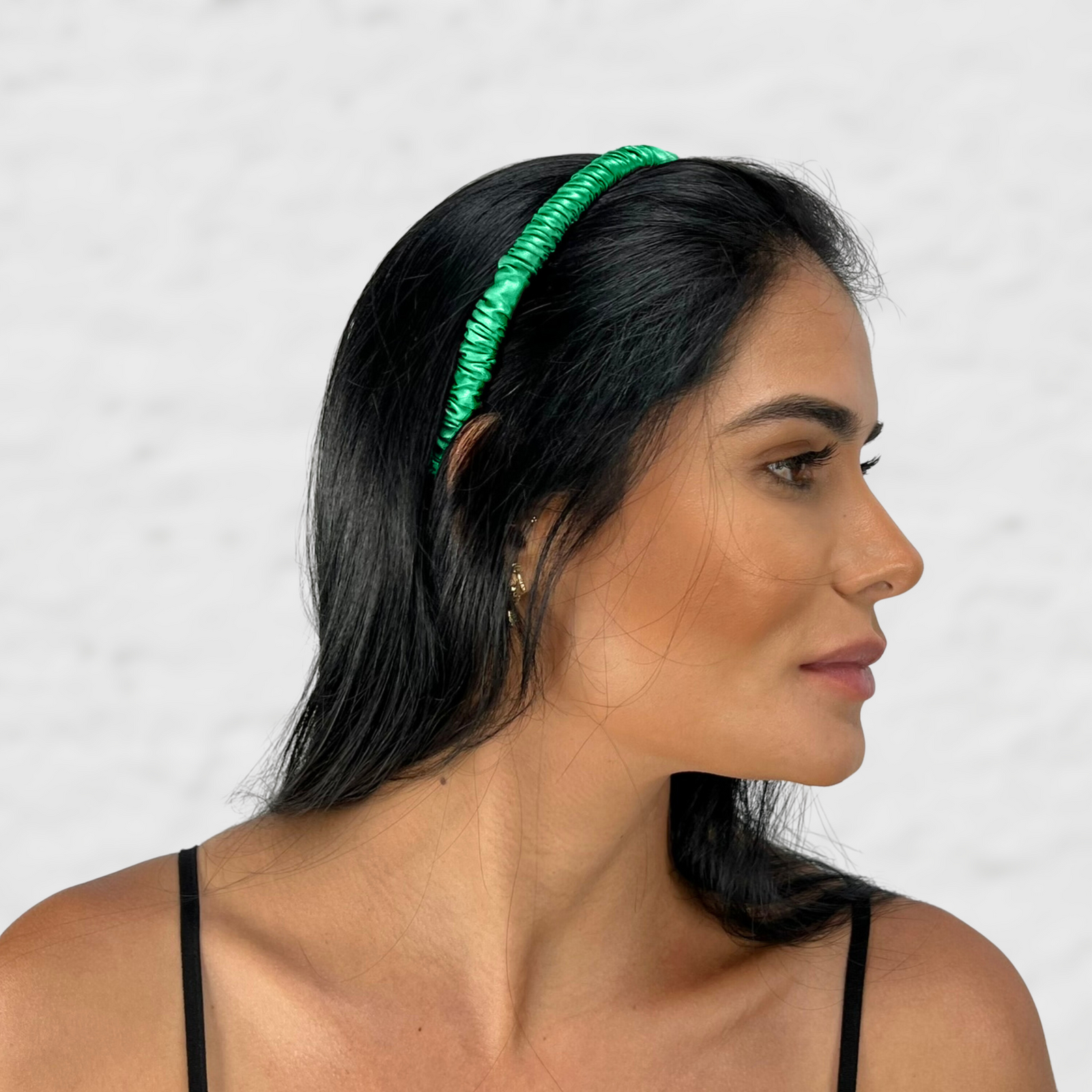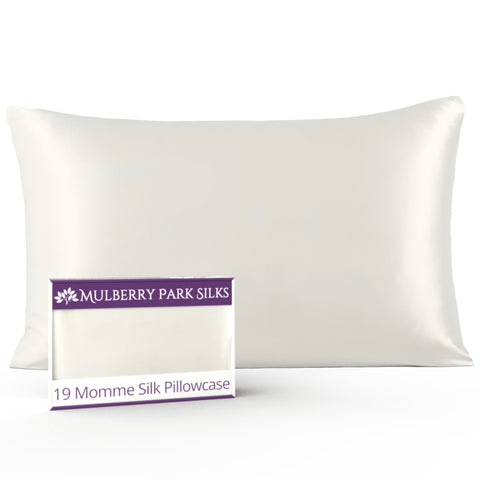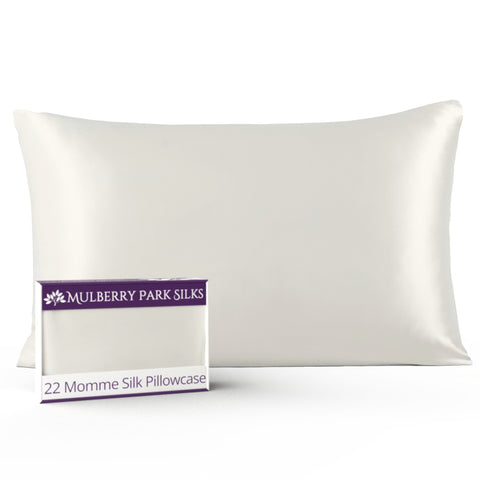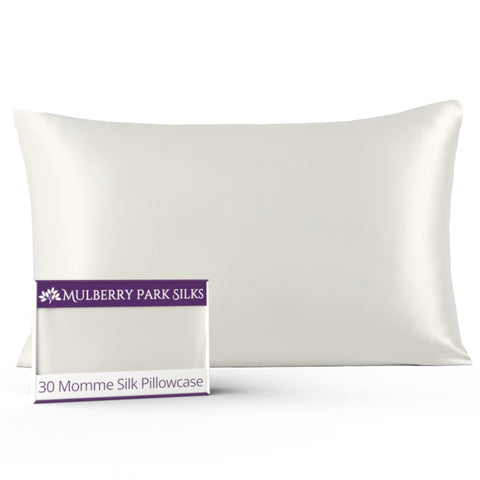Silk pillowcase care is the key to making your investment last-when cared for properly, this luxurious fabric is both surprisingly durable and long-lasting. In this guide, we'll cover everything you need to know to get the most out of your silk pillowcase.
Key Takeaways
- Higher quality silk fabric lasts longer — Grade 6A pure mulberry silk pillowcases with higher momme weights provide superior durability compared to lower-grade silk fabrics or synthetic satin alternatives.
- Proper detergent is crucial — Enzyme-free, pH-neutral detergents protect silk's protein-based fibers, while harsh detergents and enzymes break down the fabric structure over time.
- Care protocols matter most — Machine washing in cold water on delicate cycles, air drying away from direct sunlight, and protecting silk from physical damage significantly extend pillowcase lifespan.
Get the Most from Your Silk Pillowcase Investment
Silk pillowcases deliver fabulous benefits to hair, skin, sleep quality, and allergy reduction; they are a wise investment in beauty, wellness, and luxury. As a premium product, silk does come with a higher upfront cost than most regular bedding. With that in mind, the Mulberry Park Silks design team frequently fields questions about the durability and longevity of silk pillowcases.
The answer is a bit detailed. Multiple factors contribute to the length of time your silk pillowcase will maintain its luxurious feel, lustrous appearance, and hair, skin, and sleep benefits. This blog will explore these factors and show you how to maximize your silk investment while enjoying the sophistication and style that only genuine silk fabric can provide.
Start with Superior Quality: Why Your Choice of Silk Pillowcase Matters

The foundation of silk pillowcase durability begins with selecting premium silk fabric from the start. The old saying, "buy nice or buy twice" definitely applies to silk pillowcases and bedding. Choosing a superior silk pillowcase up front saves both time and money in the long run.
The Highest Quality Silk Fiber
Mulberry Park Silks pillowcases represent the best investment for durability because they're crafted from 100% pure mulberry silk of Grade 6A, the highest quality silk in the marketplace. Grade 6A ensures the longest, strongest, and most uniform silk fibers that resist wear and maintain their lustrous appearance over time.
Hypoallergenic and Independently Certified
Pure silk is a protein-based fiber that is inherently hypoallergenic. Mulberry Park Silks takes the additional step of having all of our silk fabric OEKO-TEX® STANDARD 100 certified as safe from harmful chemicals that can weaken fibers or irritate sensitive skin. This rigorous, independent protocol tests for more than 1,000 potentially harmful substances, ensuring that your investment remains safe and durable. Silk's natural resistance to mold, dust mites, bacteria, and allergens also helps maintain fabric integrity over years of use.
Our Silk Pillowcases are Designed to Last
Mulberry Park Silks pillowcases feature a charmeuse weave that is smooth and lustrous on one side with a matte finish on the reverse. Along with preventing tangles, frizz, and sleep wrinkles, the weave pattern aids durability by allowing hair and skin to move nearly friction-free across the surface, which puts less stress on the silk fibers. Superior construction details like French seams eliminate raw edges that could fray over time, while envelope closures and hidden zipper options ensure a secure fit without compromising the pillowcase structure.
How Momme Weight Affects Silk Pillowcase Durability

Momme count also impacts silk fabric durability and longevity. Momme is a measure of weight for silk that represents the density of silk weave and the thickness of individual silk fibers. The higher the momme count, the more durable your silk pillowcase will be with regular nightly use. All Mulberry Park Silks pillowcases are made from the same high-quality grade of silk with similar construction; however, we offer three different momme weights.
Our 19 momme silk pillowcases offer excellent entry-level durability at an accessible price point. While more delicate than higher momme weights, these pillowcases still provide substantial benefits when cared for properly. The lighter weight makes them ideal for people new to silk who want to experience the hair and skin benefits without the highest investment.
Our 22 momme weight silk pillowcases are our most popular option and our signature style. These pillowcases contain 16% more silk than the 19 momme option. This additional fabric density creates a tighter weave that better resists wear from regular use. The balanced combination of durability and luxury makes 22 momme pillowcases perfect for nightly use. They also coordinate with the largest number of matching sheet sets.
For ultimate durability, our 30 momme silk pillowcases contain 36% more silk fabric than the 19 momme weight. These pillowcases feature the thickest silk strands and tightest weave available, creating exceptional resistance to wear and tear. While representing the highest price point, the superior longevity makes them an excellent value for people who prioritize long-term durability.
Proper Care to Make Your Silk Pillowcases Last Longer
The single most important factor affecting silk pillowcase longevity is your care protocol. Caring for silk begins with choosing the right detergent. Regular commercial (grocery store) detergents contain harsh chemicals that are not good for silk. Even detergents labeled "gentle" or "delicate" may not be appropriate for protecting silk fabric because they contain enzymes that can degrade silk over time.
The Critical Role of Enzyme-Free Detergent
We recommend Heritage Park Silk and Wool Detergent. This pH-neutral, enzyme-free detergent is plant-based and made to care for silk and other protein-based fibers. The concentrated liquid formula cleans gently without damage. Heritage Park Silk and Wool Detergent is EWG verified, which means it contains no ingredients of concern as evaluated by the Environmental Working Group. The Fragrance-Free variety is also hypoallergenic and pediatrician and dermatologist-tested, making it ideal for sensitive skin.
Machine Washing Protocol for Maximum Durability
Proper machine washing dramatically affects silk fabric longevity. While silk requires more attention than cotton, the process becomes routine once you understand the key principles. Follow these simple steps:
1. Always wash silk pillowcases separately from other fabrics to prevent damage from zippers, hooks, or rough textures.
2. Turn each pillowcase inside out before placing it in a fine mesh laundry bag. This double protection prevents snags and tears from the washing machine's agitator or drum. Never overload your machine when washing silk, as adequate water circulation ensures thorough cleaning without excessive agitation.
3. Use only cold water or lukewarm water temperatures up to 30°C (86°F). Hot water can shrink silk fibers and damage their structure permanently. Select the delicate, gentle, or silk-specific cycle on your washing machine, which provides minimal agitation while still achieving effective cleaning.
4. Add the appropriate amount of enzyme-free silk detergent. Never use fabric softener, which leaves a waxy buildup on silk fibers that can attract dirt and diminish the natural softness and sheen that makes silk special. Similarly, avoid bleach or any whitening products that could permanently damage silk's delicate structure.
Hand Washing: The Gentlest Option for Long-Term Care
Hand washing provides the gentlest care for silk pillowcases, making it ideal for maximizing fabric longevity; it gives you complete control over the process and eliminates risk from washing machine mechanical action. The process is surprisingly quick and simple, requiring just a few minutes of active time.
1. Fill a clean basin or sink with cool to lukewarm water, then add a small amount of enzyme-free silk detergent. Submerge your pillowcase and gently swish it through the water without scrubbing or vigorous agitation. Allow the pillowcase to soak for 3-5 minutes, giving the detergent time to lift oils and dirt from the fabric.
2. Drain the soapy water and refill the basin with clean water for rinsing. Gently move the pillowcase through the rinse water to remove all detergent residue. You may need multiple rinses to ensure complete soap removal - any remaining detergent can attract dirt or cause skin irritation.
3. Never wring or twist wet silk, as this can damage the delicate fibers. Instead, gently press the pillowcase between clean towels to remove excess water. The pressing motion absorbs moisture without stressing the fabric structure.
Proper Drying Techniques to Preserve Silk Integrity
How you dry your silk pillowcase significantly impacts its longevity and appearance. Never put silk pillowcases in a hot dryer; heat is one of silk's greatest enemies, capable of shrinking fibers and destroying the fabric's natural luster. If you use a machine dryer, select the no-heat or air-only setting, though air drying remains the preferred method for maximum fabric preservation.
For best results, hang your silk pillowcase to dry indoors or outside, but always away from direct sunlight. UV rays can fade silk colors and weaken fibers over time. Choose a location with good air circulation to promote even drying. A drying rack works perfectly, or you can hang pillowcases on padded hangers to prevent creasing.
Silk dries relatively quickly due to its natural moisture-wicking properties. Most pillowcases will be completely dry within a few hours. If slight wrinkles appear during drying, don't worry - placing the pillowcase on your pillow while slightly damp allows you to smooth out creases by hand. Any remaining wrinkles typically relax within a day or two of use.
Avoiding Physical Damage and Chemical Exposure
Beyond washing and drying protocols, protecting your silk pillowcase from physical damage and chemicals significantly extends its lifespan.
Be Mindful of Jewelry, Nails, and Accessories
Physical damage often comes from jewelry, particularly rings and earrings that can snag delicate silk fibers. Remove jewelry before bedtime, or be extra cautious when moving around your pillowcase. Sharp objects like belt buckles, hair clips, or even long fingernails can tear silk fabric. Keep nails trimmed and smooth, and moisturize dry or calloused skin that might catch on silk threads. And watch out for pet paws, which can snag silk.
Minimize Contact with Hair and Beauty Products
Chemical exposure represents a subtler but equally damaging threat. Acidic skincare products, particularly vitamin C serums, can cause discoloration or bleaching when they contact silk fabric. Always allow skincare products to fully absorb before lying down, and consider using a thin cotton barrier if you use potent treatments.
Hair products containing alcohol, such as hairsprays or styling products, can dry out and damage silk fibers. Apply these products well before bedtime and ensure they're completely dry. Similarly, remove all makeup before sleep - cosmetic stains can set permanently and attract dirt that accelerates fabric wear.
Prompt Stain Treatment for Long-Term Preservation
Acting quickly when stains occur prevents permanent damage and extends your silk pillowcase's useful life. Different types of stains require specific approaches, but the general principle remains consistent: address problems immediately before they set.
For blood stains, rinse immediately with very cold water from the wrong side of the fabric to push the stain out rather than deeper into the fibers. Cold water prevents blood proteins from coagulating and setting permanently. Soak the affected area in cold water, and if necessary, pre-treat with an enzyme detergent or stain remover* specifically for this purpose.
Oil-based stains from cosmetics or skincare products respond best to gentle dabbing with a clean cloth to absorb excess product, followed by careful washing with your regular silk detergent. Never rub stains vigorously, as this can damage silk fibers and spread the stain further. For water-based stains like sweat or most beverages, rinsing with cool water and normal washing usually proves sufficient. The key is preventing stains from sitting on the fabric long enough to penetrate deeply or attract additional soil.
*While you should avoid enzyme detergent for regular washing, occasional spot treatment for stubborn stains like blood or cosmetics is acceptable.
Proper Storage Practices for Maximum Longevity
When not in use, proper storage protects silk pillowcases from dust, light damage, and physical harm. Clean pillowcases thoroughly before storage, as any remaining oils or dirt can attract insects or cause permanent staining over time.
Fold silk pillowcases loosely and store them in a cool, dry location away from direct sunlight. Cedar blocks or lavender sachets help deter insects naturally without using harsh chemicals. Avoid plastic bags for long-term storage, as silk needs air circulation to prevent moisture buildup and mildew formation. You can place your folded silk pillowcases inside a clean cotton storage bag (or pillowcase) for protection.
A Holistic Approach to Silk Longevity
Helping your silk last longer isn't about one single thing, but about everything. Mulberry Park Silks Brand Manager, Kendra Cosenza, sums it up, saying:
"Silk durability isn't about finding one perfect trick. It's about understanding that every interaction with the fabric matters. Whether it's the detergent you choose, how you dry your silk pillowcase, or consistently removing sharp jewelry before bed, each small consideration adds up to significantly extend your pillowcase's lifespan."
If you have any questions about silk care or our products in general, please give our design team a call. We are here to help!
Frequently Asked Questions
How long should a high-quality silk pillowcase last with proper care?
A premium silk pillowcase made from Grade 6A mulberry silk can last 2-5 years or longer with consistent proper care. Higher momme weights, like our 30 momme options, typically outlast lighter weights. The key factors are using enzyme-free detergent, washing in cold water, air drying, and protecting from physical damage.
Can I wash my silk case in the washing machine safely?
Yes, you can safely machine wash silk pillowcases using a delicate cycle, cold water, and enzyme-free detergent. Always place pillowcases in mesh laundry bags, turn them inside out, and never use fabric softener. Hand washing provides gentler care, but machine washing is acceptable when done properly.
Will a silk pillowcase help with my frizzy hair and prevent tangles?
Absolutely! Unlike a cotton pillowcase that creates friction, a silk pillowcase allows hair to glide smoothly, significantly reducing frizz and tangles. This benefit is particularly noticeable for people with curly or frizzy hair who struggle with morning hair management.
What's the difference between enzyme and non-enzyme detergents for silk?
Enzyme detergents contain protease and other enzymes that break down protein-based stains, but silk fabric is also protein-based. Regular use of enzyme detergents gradually damages silk fibers, causing loss of sheen and strength. Non-enzyme detergents clean effectively without harming silk's natural protein structure.
How do silk pillowcases compare to expensive options like Slip pure silk pillowcase or Blissy silk pillowcase?
Mulberry Park Silks pillowcases offer superior value compared to these expensive options while maintaining the same Grade 6A quality standards. Our pillowcases provide identical benefits for hair, skin, and acne management at more accessible price points, available in standard, queen, and king sizes.
How often should I wash my silk pillowcase?
Wash silk pillowcases every 1-2 weeks, similar to cotton pillowcases. People with oily skin or acne may need weekly washing, while those with dry skin can often go longer. Always wash before first use and whenever the pillowcase appears soiled or begins to lose its fresh feel.
Can silk pillowcases help prevent wrinkles during sleep?
Yes, the smooth surface of silk reduces friction against facial skin, helping minimize sleep wrinkles that can form during the night. This anti-aging benefit is one reason why dermatologists often recommend silk pillowcases for patients concerned about premature aging and skin health.
Can I put my silk pillowcase in the dryer?
Never use heat when drying silk pillowcases. If you must use a machine dryer, select the no-heat or air-only setting. Air drying away from direct sunlight provides the best results and prevents heat damage that can shrink or weaken silk fibers permanently.
What momme-weight silk pillowcase lasts longest?
Higher momme weights provide greater durability. Our 30 momme pillowcases contain 58% more silk than 19 momme options, creating a denser, more resilient fabric. However, all our momme weights offer good durability when cared for properly; choose based on your budget and preference for fabric weight.
Is silk better than polyester satin for durability?
Absolutely. While polyester satin may feel smooth initially, it's a synthetic material that doesn't breathe well and lacks silk's natural durability. Polyester can pill and degrade more quickly than quality silk fabric, making silk a better long-term investment for your body and overall sleep quality.
Where can I buy quality silk pillowcases?
You can find Mulberry Park Silks pillowcases online through our website or on Amazon. We offer standard, queen, and king sizes in multiple colors, ensuring you find the perfect match for your bedding while avoiding the premium prices of expensive options in the marketplace.
What should I avoid to prevent damaging my silk pillowcase?
Avoid hot water, harsh detergents, fabric softeners, high heat drying, and direct sunlight exposure. Remove jewelry before bed, keep nails trimmed, and let skincare products absorb fully. Address stains promptly and store clean pillowcases in cool, dry locations away from light.

